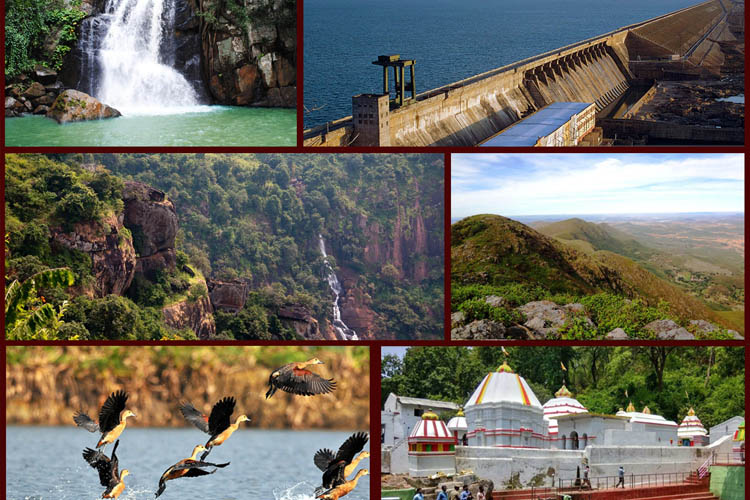Situated in the southern part of Odisha, Koraput is a beautiful and culturally rich destination known for its lush green valleys, waterfalls, tribal heritage, and scenic landscapes. Resting at an elevation of 3,000 feet above sea level, Koraput is a paradise for nature lovers, anthropologists, and spiritual seekers. With its cool climate, coffee plantations, and peaceful environment, it offers a refreshing escape from city life.
1. Gupteswar Cave Temple
Dedicated to Lord Shiva, this sacred cave temple is located deep inside a forest near the Sabari River. Known for its naturally formed Shiva Linga, Gupteswar attracts thousands of devotees, especially during Shivratri. The journey through the forest is as spiritual as the destination.
2. Duduma Waterfall
One of the highest waterfalls in Odisha, Duduma Falls drops from a height of over 157 meters. The fall is formed by the Machkund River and lies on the border of Odisha and Andhra Pradesh. It is a mesmerizing sight, especially during the monsoon season.
3. Deomali – Odisha’s Highest Peak
Standing tall at 1,672 meters, Deomali is the highest mountain peak in Odisha. It offers breathtaking views of the Eastern Ghats and is ideal for trekking, photography, and adventure lovers looking to explore the wild side of Koraput.
4. Tribal Museum (Koraput Museum)
This museum showcases the rich and diverse tribal culture of Odisha, including traditional costumes, weapons, jewelry, art, and lifestyle. It's a must-visit for those who want to understand the life and customs of over 50 indigenous tribes living in the region.
5. Sabar Srikhetra (Jagannath Temple of Koraput)
A unique and inclusive Jagannath Temple, Sabar Srikhetra welcomes people of all castes and religions. Surrounded by green hills and a serene atmosphere, it’s a spiritual destination that reflects unity and peace.
6. Sunabeda
Known for its plateaus, valleys, and forested areas, Sunabeda is perfect for eco-tourism. It is also home to the Sunabeda Wildlife Sanctuary, which shelters leopards, tigers, gaurs, and a variety of birds.
7. Kolab Dam (Upper Kolab Reservoir)
A large reservoir built on the Kolab River, this dam supplies water and power to the region. The picturesque setting and gardens around the dam make it a great spot for picnics, boating, and relaxing in nature.
8. Jeypore Town
The commercial and cultural hub of Koraput district, Jeypore is known for its palaces, markets, and nearby scenic attractions. It is the perfect base for exploring surrounding destinations like Duduma and Gupteswar.
9. Tribal Markets (Haats)
Experience the vibrant weekly tribal markets in places like Onkadeli and Kunduli, where local tribes trade vegetables, spices, forest produce, and handmade items. These markets are a great way to witness the authentic tribal lifestyle and support local communities.
10. Coffee Plantations
Koraput has ideal conditions for growing high-quality organic coffee. A visit to these plantations offers insight into eco-friendly farming and gives you a chance to taste some of the best coffee produced in India.
11. Best Time to Visit
October to March is the best time to visit Koraput, when the weather is cool, pleasant, and ideal for sightseeing and trekking.
12. How to Reach
-
By Road: Connected to Visakhapatnam, Jeypore, and Bhubaneswar.
-
By Rail: Koraput and Jeypore have railway stations connected to major cities.
-
By Air: Nearest airport – Visakhapatnam Airport (200 km approx.)





